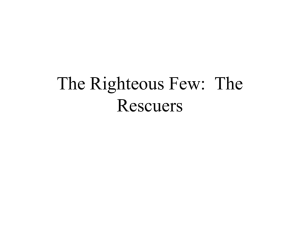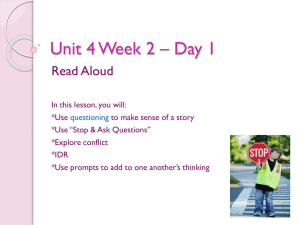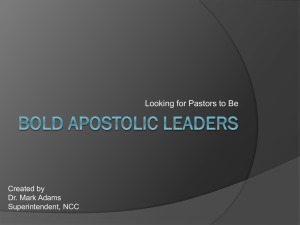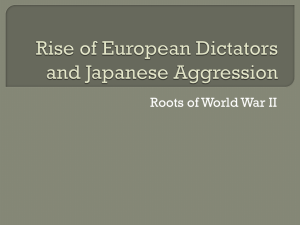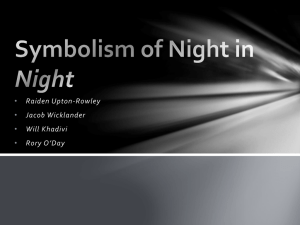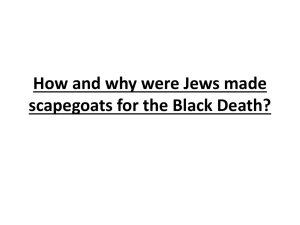The Latin West 1200-1500
advertisement
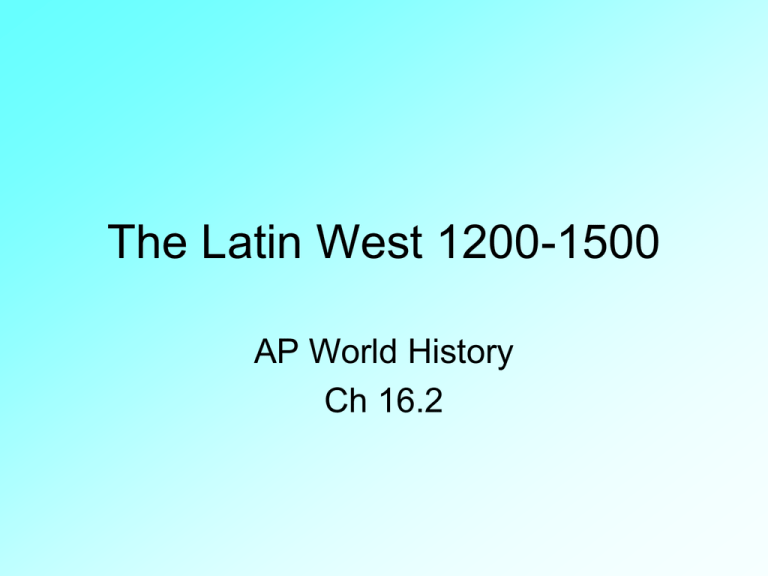
The Latin West 1200-1500 AP World History Ch 16.2 Part 2 Urban Revival • 900 CE no town or city in Europe could compare to the cities in the Byzantine Empire • By the 1500’s cities in western Europe and around the Mediterranean rapidly experienced commercial, cultural and administrative changes Causes of Urban Revival • The increased growth of trade and manufacturing after 1200 • Lead to the growth of Urban areas in the Latin West Major Cities • Developed due to trade or manufacturing • Trade allowed cities in northern Italy to prosper. • Venice was the dominant city for trade in the Far East Flanders • Region in northern Europe what is now Belgium • Main city Bruges • became a large, major textile manufacturing and trading area. Technology • Late 1200’s, the spinning wheel arrives in England. • Transforms the economy from wool export to textile exports by the mid 1400’s. • Competition promoted the spread of manufacturing and encouraged the development of new specialty goods. Flanders trade ship route Characteristics of trading cities in the Middle Ages • Offered people more social freedom than rural places • “Chartered Cities” where residents could claim freedom from serfdom after one year. • Quickly able to adapt to changing market conditions (diversified) • Home to most of Europe’s Jews Metal Working • Grew because of: • Watermills • Improved mining techniques from central Europe • Blast furnaces • New sources of metals • Blast furnaces powered by machine driven bellows provided the high temperatures needed to produce high-quality iron by the late 1300’s. • Water also powered stamping mills that broke up iron and trip hammers that pounded it into shape. Industry and Environmental Change • Rapid growth of industry caused: • Deforestation • Water pollution by industries like tanneries • Damming of rivers • The creation of quarry pits and mines Deforestation occurs due to farming, building, fuel production and making of charcoal for glass and iron industry. Interesting facts • Building boom France during 1200 1400’s causes more stone to be quarried than during the age of the Egyptians. • The first pollution laws were passed by English Parliament in 1388. Civic Life Hanseatic League • Based in Germany • An association of trading cities in northern Europe is created. • Promoted increased trade through Russia in the East and England to the West. Guilds • An association of craft specialists in the same trade. • Dominate manufacturing in cities and become powerful political and economic institutions. • Example Silversmiths, woodworkers, leatherworkers. • They will become “Trade Unions” in later centuries. Guilds • Set prices for goods. • Trained apprentices and promoted business interests in politics. • Denied membership to outsiders and Jews. • Perpetuated male dominance of the most skilled jobs Nepotism • The practice of hiring and promoting family members ahead of others in a business. • kept families of guild members as most powerful leaders of industry. International Fairs • Regional markets that met once or twice a year. • “Champagne Fairs” in French wine regions. • Manufactured goods, livestock and farm produce were bought and sold. • The king of France guaranteed safe passage for all traders going to these markets after 1100. • Goods from known world were exchanged. • Also important for currency exchange. Merchant Banks • Most significant growth industry of 1400’s. • European Financial Institution that engages in Investment Banking, Counseling, Advising and in Mergers and Acquisitions. • Created very wealthy merchant-banker class. Merchant Bank Families • Medici Family • Most powerful banking family in Italy • Patrons (supporters) of the arts • Florence was home • The Galileo Project | Galileo | Patrons | Medici Family Merchant Bank Families • The Fuggers of Augsburg • German family had 10 times wealth of Medici • Jacob Fugger Portraits Merchant Banks • Services included: 1. Checking accounts 2. Shareholding companies 3. Money changing 4. Loans 5. Making investments Locate - Florence Home of the Medici What Trade Organization were the Fuggers Close to? European Jews • Cities were home for most of Europe’s Jews. • Jews were targets of persecution, blamed for the spread of the plague. • Before they were expelled in 1492, Spain held the largest population of Jews in Europe. • 1492 Spanish kings expel all Jews and nobles confiscate their wealth and properties in the name of religious purity. European Jews • The Catholic Church played no official role in the persecution of Jews • The church was officially the protector of Jews. • three pages from a book of historical maps, drawn by Riza ibn Muklebi in 1686. • show the migration of Jews expulsed from Spain to Istanbul in 1492. Text in Arabic and Ladino. Spanish expulsion of Jews 1492 • • • • • • • • • Locate London Flanders Venice Champagne Region Hanseatic League Territory Florence Spain Augsburg End Part 2



